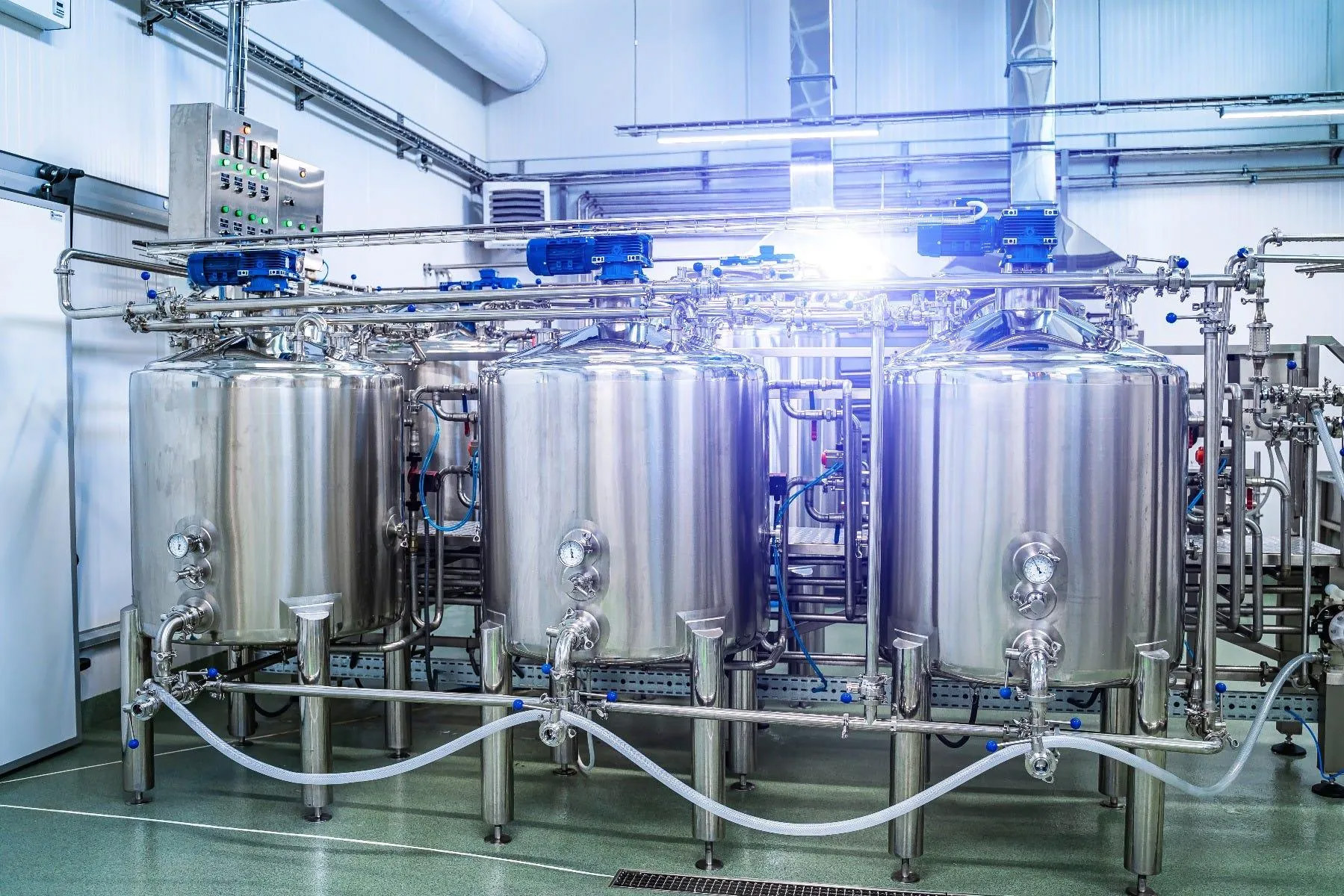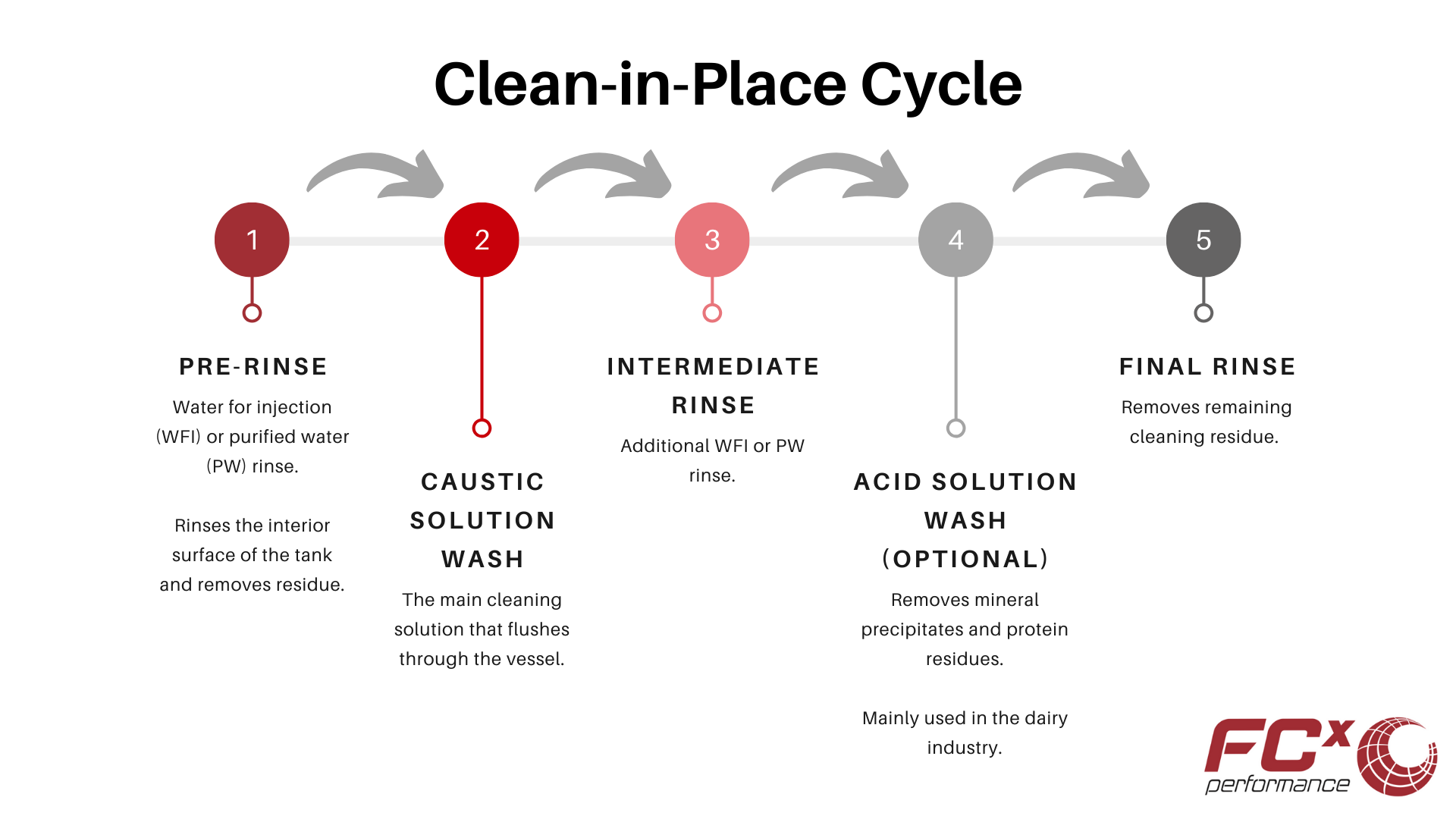
3 Benefits of a Clean-In-Place System
Improve your sanitary procedures and ensure cleanliness
Article written by FCX Performance
The ultimate goal of any clean-in-place process is ensuring all equipment or process lines are properly sanitized to achieve industry standards including FDA, USDA, EHEDG and 3A standards. Our hygienics team is trained to evaluate the effectiveness of your current clean-in-place system to help you produce a quality product and minimize recall risk.
What is clean-in-place (CIP)?
Clean-in-place is a method of cleaning the interior surfaces of pipes, vessels, process equipment, filters and associated fittings without disassembling the equipment. A CIP system is important to the hygienic industries including dairy, food and beverage, pharmaceutical and cosmetics because it kills bacteria in the process lines, dislodges product, removes residues, etc.
How do clean-in-place systems work?
- Pre-Rinse: A water for injection (WFI) or purified water (PW) rinse. This rinses the interior surface to remove residue and can also double as a non-chemical pressure test of the CIP flow path.
- Caustic Solution Wash: The main cleaning solution that flushes through the vessel.
- Intermediate Rinse: Additional WFI or Purified Water intermediate rinse.
- Acid Solution Wash (Optional): Removes mineral precipitates and protein residues. This is mainly used in the dairy industry.
- Final Rinse: Removes remaining cleaning residue.

How can a clean-in-place system benefit my business?
While CIP systems have been around for decades, some companies choose not to upgrade them and only make small changes when necessary. However, most find the need to quickly adapt to new regulations or shifts in customer demand.
Consider the benefits of a clean-in-place system:
Ensure product quality
A proper CIP system can decrease the risk for cross-contamination and lower quality batch runs with monitoring sensors. This process minimizes mistakes and reduces the chance of human error contributing to an unsafe product. Reliable and repeatable CIP solutions create sustainable product quality and consistency, leading to fewer product recalls and a higher brand confidence.
Increase production time
With an efficient CIP system, employees can dedicate time to more productive, profitable tasks rather than disassembling and cleaning components. Employees don’t need to enter tanks to clean them and cleaning agents are contained within the CIP system.
Conserve chemical and water usage
An effective CIP solution uses a smaller amount of chemicals, water and energy. A smaller amount of chemicals means a smaller amount of water needed to dilute and neutralize the chemicals. The repeatable cycle control on the CIP system can also decrease water and energy usage. For example, in a three-tank CIP system (when acid wash is not needed) the re-use tank can capture the intermediate wash and use it as a pre-rinse in the next cleaning sequence. In many cases, the caustic wash can be returned to its tank and reused multiple times, which significantly reduces water, chemical and energy costs.
Clean-in-place processes can remove the residue and bacteria out of your processes and put time back on your clock and money back in your pocket. Optimize your hygienic process and maximize sanitary procedures with a clean-in-place system.
TALK WITH AN EXPERTOur team of experts not only specialize in improving your overall process but go above and beyond to provide a solution for all your hygienic process needs. For more information on FCX hygienic products, processes and solutions, visit our main hygienics page. |


